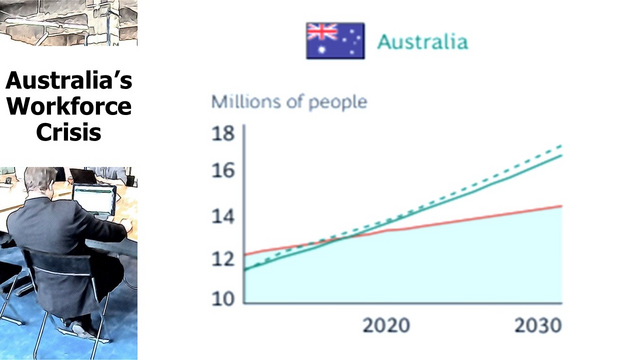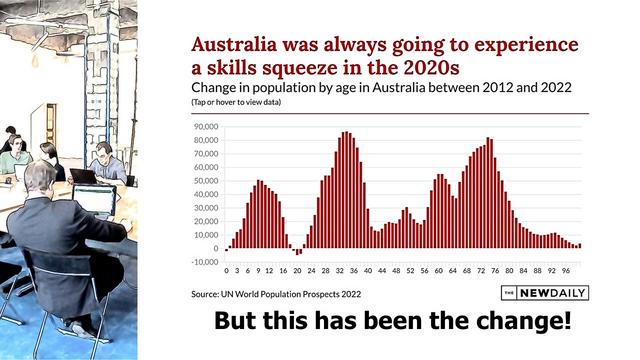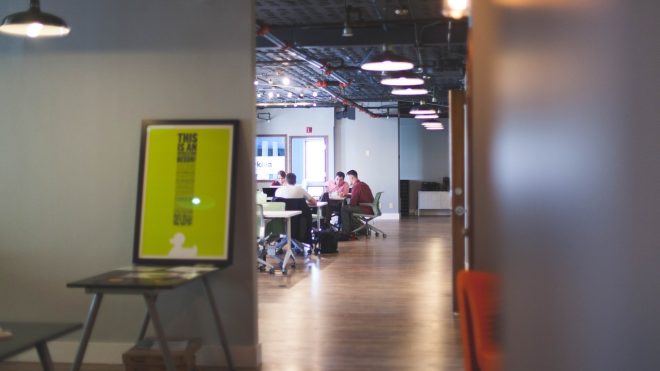As a business owner or manager in Australia, you’re likely aware of the pressing issue we face—the workforce crisis. This crisis is not a fleeting concern; it’s a persistent challenge rooted in structural demographic shifts. Today, we will delve into the core problems driving this crisis, its impact on businesses, and actionable steps you can take to mitigate its effects on your business.

To comprehend the gravity of this crisis, let’s dissect Australia’s population by age in 2022. Figure 2 from the UN World Population Prospects 2022 shows that the distribution seems reasonable initially, with a decent number of people in the middle age range.

However, the situation takes a bleak turn when we examine the population change between 2012 and 2022 (refer to Figure 3). A significant drop in the workforce is evident, particularly between ages 40 and 60, primarily attributed to the retirement of the baby boomer generation.

Compounding the problem is the mismatch in motivations and work values between generations. The newer workforce doesn’t share the same motivations as Baby Boomers and Gen X, exacerbating the struggle to find suitable replacements for retiring talent. Historically, Australia has relied on immigrant labor to bridge the gap. However, the pandemic disrupted this, leaving a gaping hole in the workforce.
Currently, Australia faces a historically low unemployment rate of three percent, making it exceedingly competitive to secure skilled workers. In Graph 3, estimates suggest a requirement for approximately 500,000 immigrant jobs to fill the workforce gaps, a demand unlikely to be met promptly. This crisis isn’t confined to Australia alone; New Zealand is also grappling with similar challenges, further intensifying competition for skilled workers.
Addressing the Crisis: Five Key Strategies
- Align Your Workforce Plan with Business Strategy Gain a clear understanding of your business strategy and develop a workforce plan that synergises with it. It’s vital to focus on the types of talent necessary to execute your business strategy effectively.
- Optimise Talent Attraction and Retention Devise strategies to attract and retain skilled workers in this competitive market. Tailor your approach to appeal to the motivations and values of the newer generations entering the workforce.
- Leverage Outsourcing Effectively Implement a robust outsourcing strategy to delegate low-value and hard-to-fill tasks, ensuring optimal productivity and efficiency within your organisation.
- Enhance Productivity through Technology and Lean Practices Embrace lean methodologies, agile techniques, and technology integration to boost productivity across your organisation. Leverage technologies, including AI and robotics, to optimise your systems and utilise your workforce efficiently.
- Stay Adaptable and Future-Focused Continuously assess your business strategy and adapt to changing circumstances. Be open to exploring innovative approaches and leveraging emerging technologies to drive your business forward.
Embrace the Future with Confidence
As the global workforce crisis unfolds, it’s imperative to embrace proactive strategies to secure your business’s future. By aligning your workforce plan with your business strategy, optimising talent attraction and retention, leveraging outsourcing, enhancing productivity through technology, and staying adaptable, you can navigate this crisis successfully.
That’s where our Workforce Crisis Diagnostic can make a world of difference. Aligned with global best practices, it empowers you to take control of your workforce’s future. By evaluating and addressing these key factors, you can unlock the full potential of your business and build a resilient, engaged, and high-performing workforce.
Invest in your workforce, invest in your business, and invest in your success. Discover the power of our Workforce Crisis Diagnostic today.
For additional resources and personalised guidance in formulating your strategy to overcome the workforce crisis, visit Shifft.com.au. Together, let’s steer your business towards a brighter and more resilient future.
Feel free to reach out for a discussion on how to tailor these strategies to your unique business needs.

